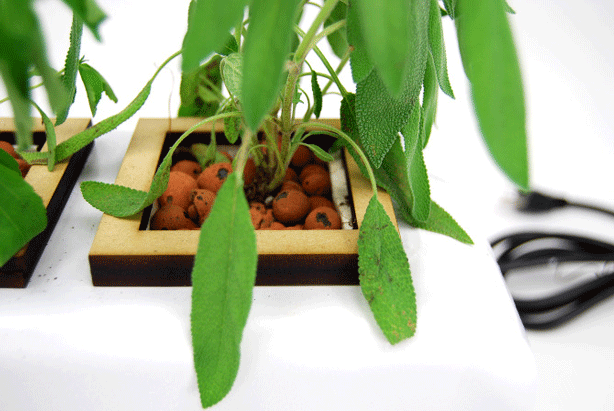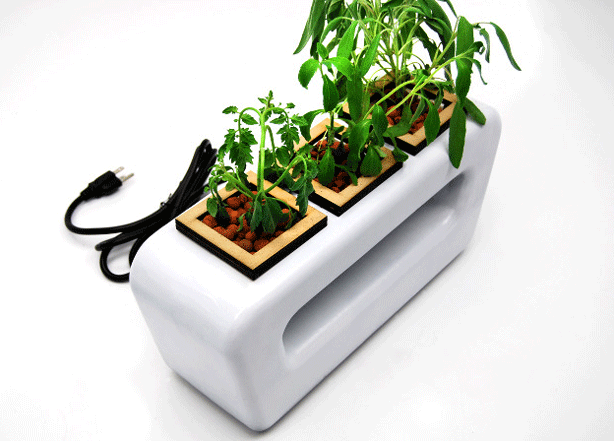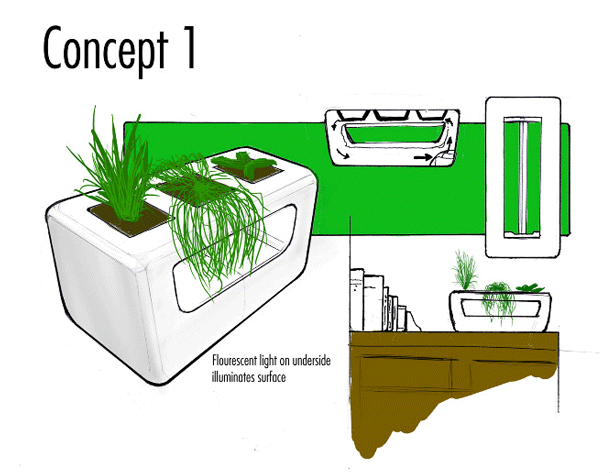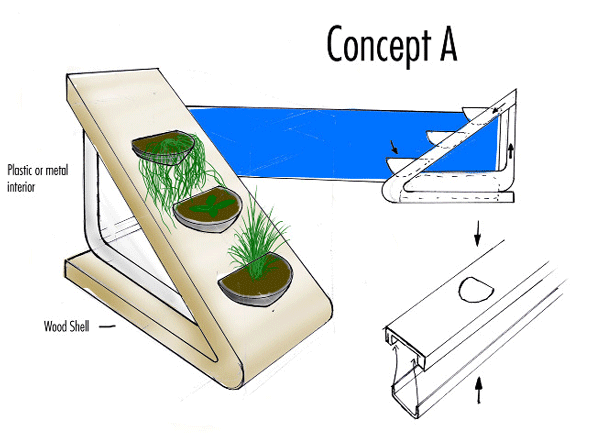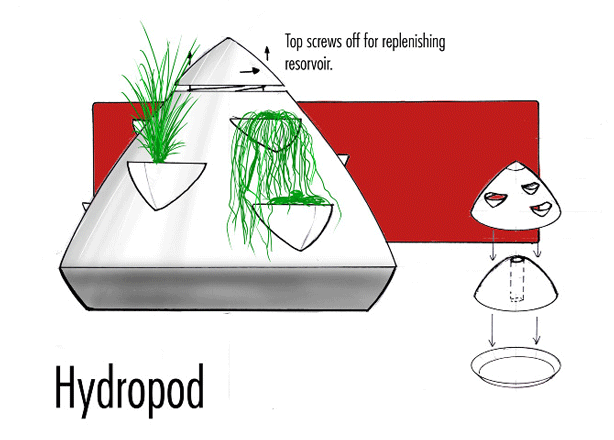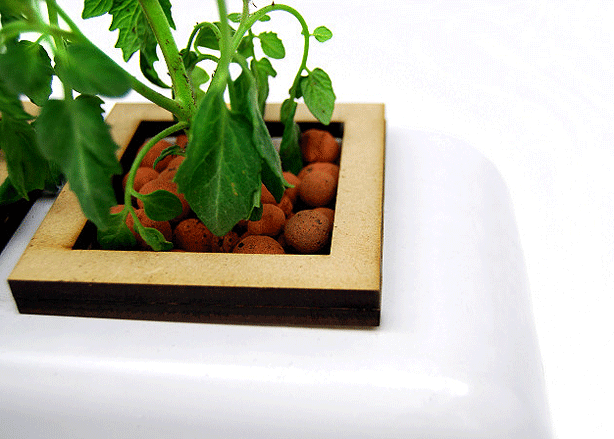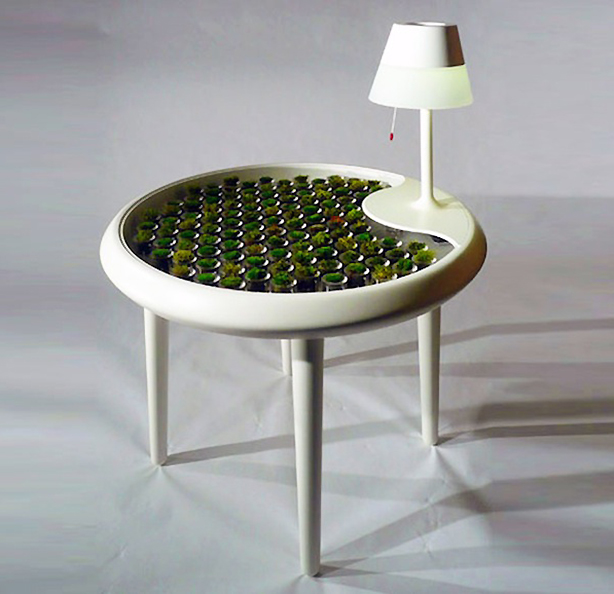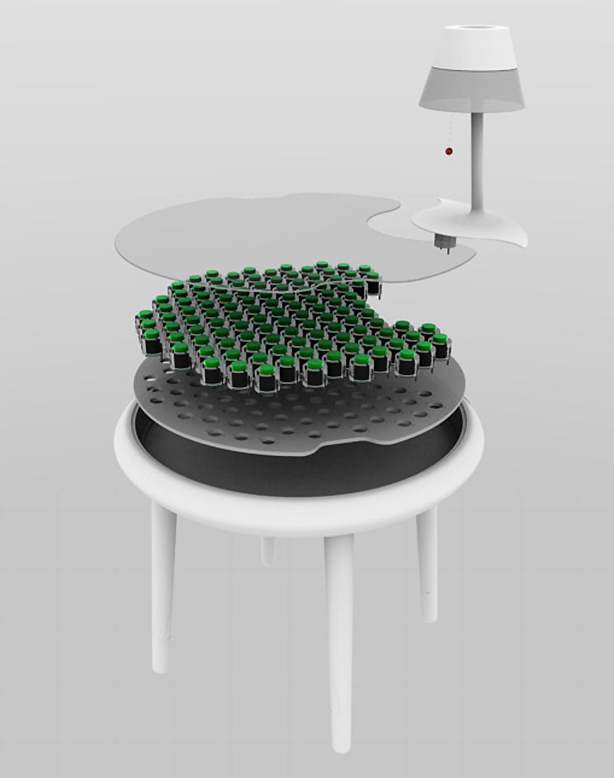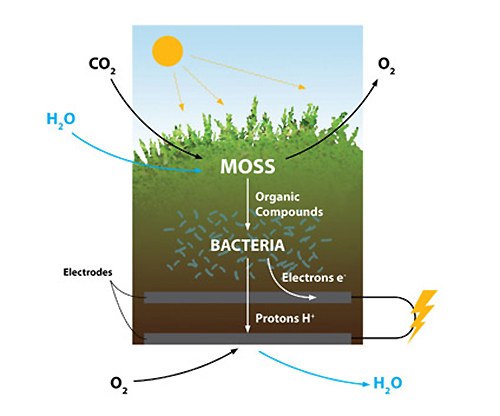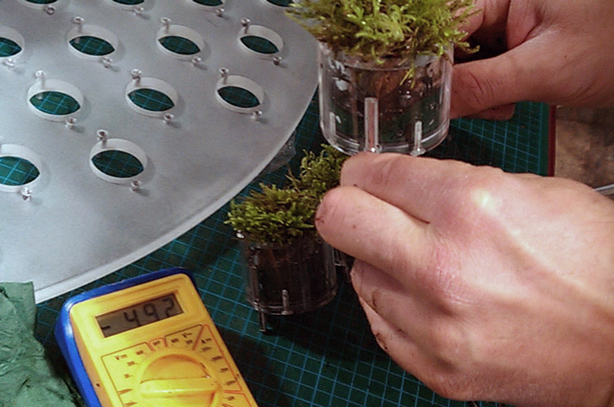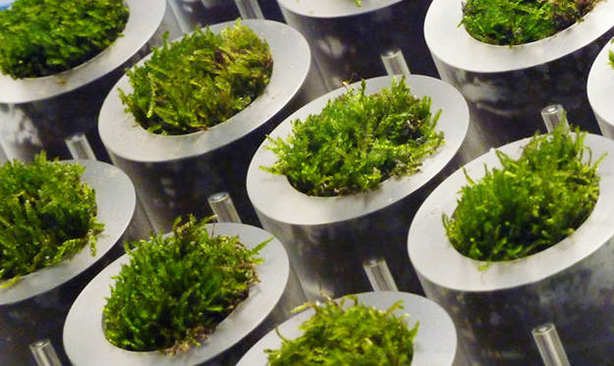Going With the Flow: Stylish Designer Tabletop Hydroponic Planter
February 14, 2014 by Robin Plaskoff Horton
For space deprived design lovers who yearn to grow some of their own food, this contemporary designer tabletop hydroponic planter fits the bill.
Challenged with reinterpreting an existing DIY planter project, design student Blake Burell created Hydropod, a sleek countertop hydroponic planter which is as functionable as it is fashionable.
To complement the green and “organic nature” of the plants, Burell settled on white for the planter. His solution built upon a somewhat common form of indoor hydroponic gardening, a nutrient film system. In his rebuild, he tested a few designs but settled on the one above which contains three individual planters. The automated system provides a constant flow of nutrients delivered via the water flowing over the plant roots.
Series of PrototypesWith designs like Burell’s which feature planter cups, one can plant a variety of edibles at the same time.
In the hydropod prototypes, a concealed water pump pushes water from a reservoir in the base to the top portion of the planter where it flows along the bottom of the cups containing rocks and the plants.
Water gets recycled from one end of the base to the other, then back into the reservoir and recirculated again to repeat the process. Individual planter cups are easily lifted out of the base to to be refilled with more nutirent-infused water. And so it flows.
